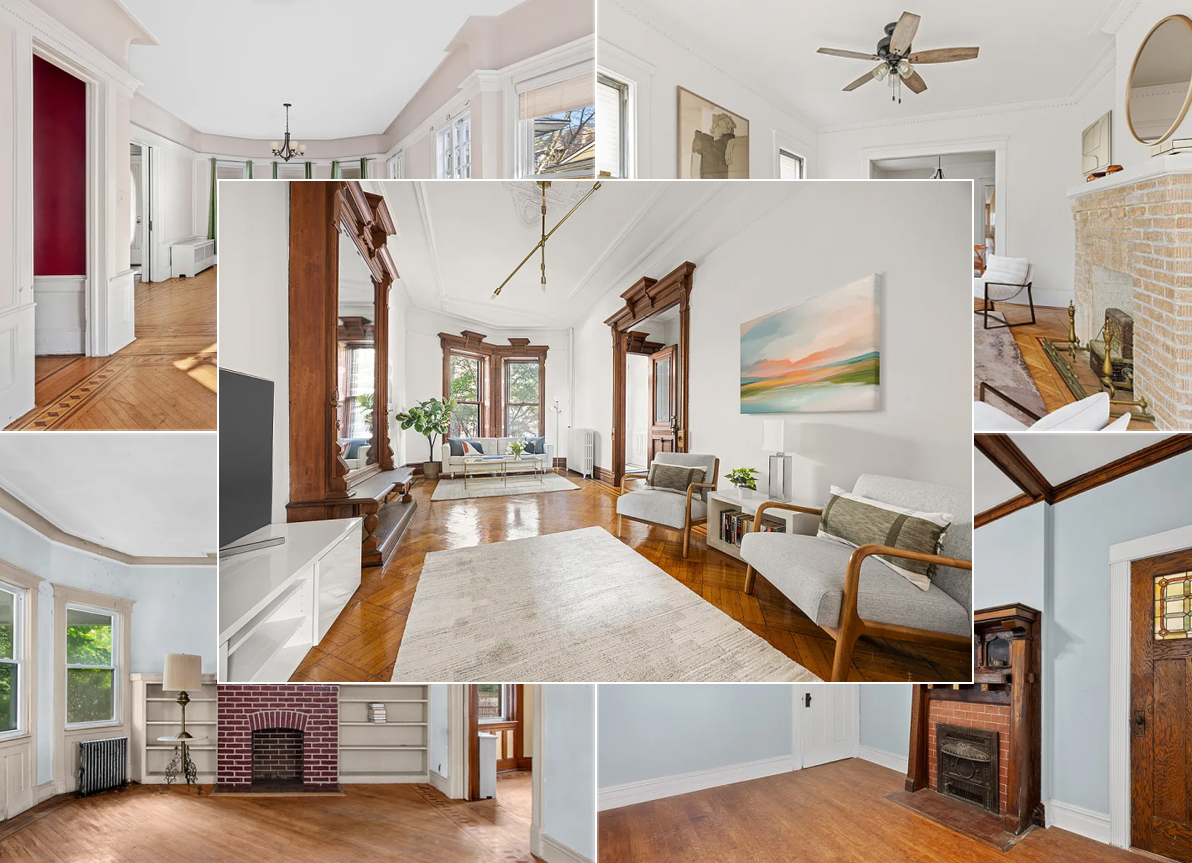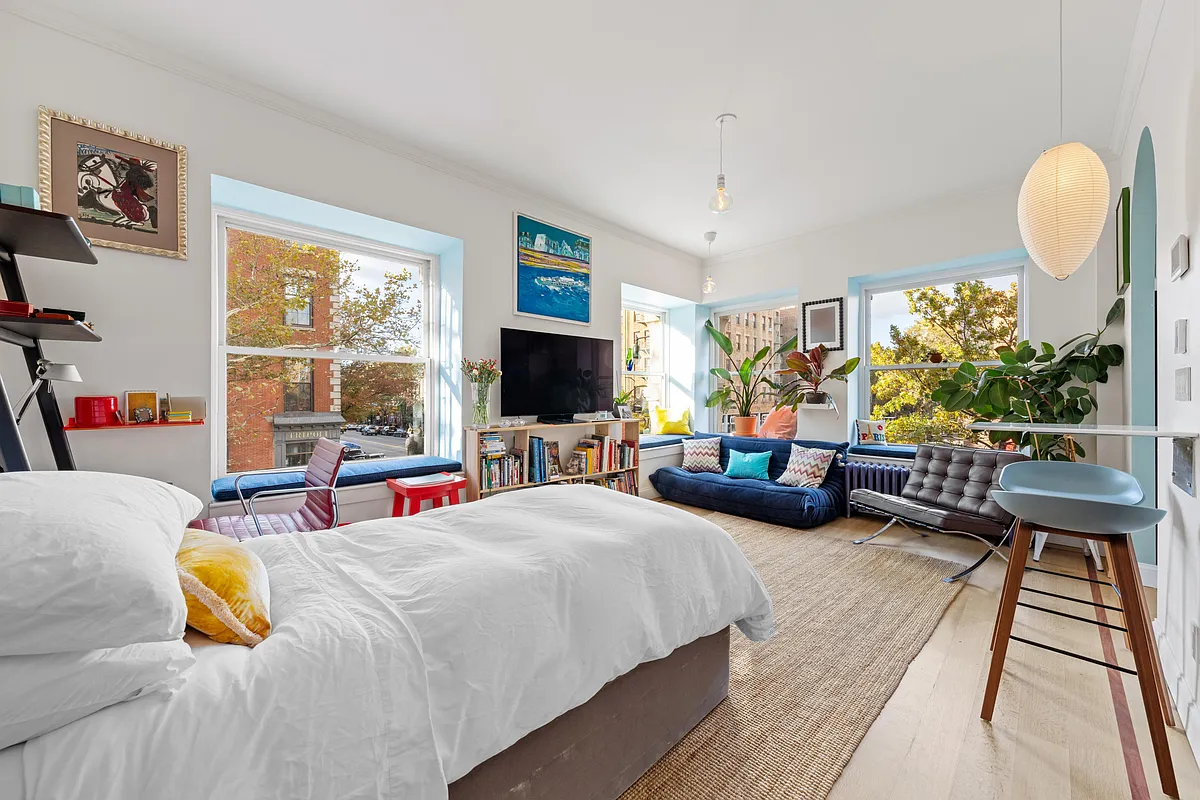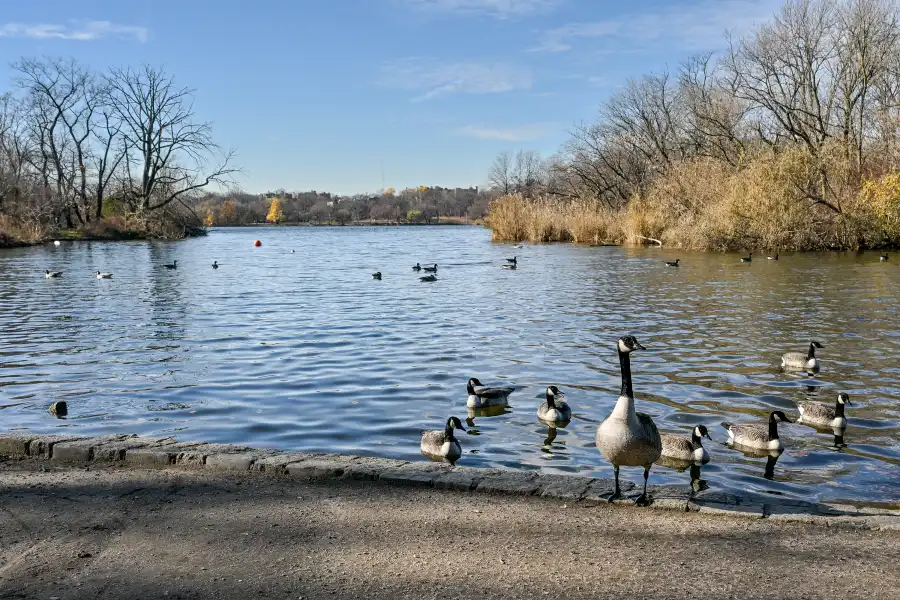Fulton Mall: Death By Compromise?
The Pratt Center for Community Development has released its full report–analysis and recommendations–on the Fulton Mall. Here are the five “strategies” the report recommends following. Clearly, they are trying to walk a very fine line balancing all the class and racial sensitivities that are all rolled up in the issue now. 1. Address the physical…


The Pratt Center for Community Development has released its full report–analysis and recommendations–on the Fulton Mall. Here are the five “strategies” the report recommends following. Clearly, they are trying to walk a very fine line balancing all the class and racial sensitivities that are all rolled up in the issue now.
1. Address the physical appearance of the Mall with innovative and culturally sensitive facade improvement (huh? sounds like politically-correct jibberish to us), building conservation and new building design techniques that embrace the aesthetic theme of “old meets new.” (We have no idea what this means but it sounds like a recipe for confusion and mediocrity.)
2. Better utilize buildings by activating vacant upper stories and carefully planning a mix of uses that supports the dynamism and diversity of the Mall and makes it more of a 24-hour place. (No quibbles with this one.)
3. Promote and enhance the current retail themes found on the Mall: urban wear, Hip Hop fashion and music, uniquely Brooklyn. (What, no Banana Republic? What about that diversity?)
4. Improve the public realm and enliven the side streets to enhance the experience of shoppers and visitors on Fulton Street, as well as workers and residents to the north and south. (Ah, so this is where they throw the gentrifiers a bone. The only problem is it sounds like they’ll have to wade through the penis-engraved tooth caps to get to their precious cafes. Not gonna work in our opinion.)
5. Engage a broad and diverse group of stakeholders in the planning process from this point forward. (We’re all just one big happy multi-cultural family!)Fulton Mall 2006 Report [Pratt Center]
Photo by f. trainer





chp-
the fulton street improvement association (FSIA) already has a facade improvement program “which aims to assist businesses in designing and funding more shopper-friendly signage, awnings and security gates.”(from their site) the FSIA can also get money from the city or state for renovation/restoration.
here’s what the pratt report says:
Next Steps:
ô€¸ Address building conditions with new
design guidelines and/or a
“conservation district†overly using the area’s existing Special District provision.
ô€¸ Model façade improvements that take
creative and culturally sensitive approach to signage, storefront design,
façade maintenance.
ô€¸ Identify soft sites for redevelopment
by private initiatives and model types
of new designs that would be desirable.
ô€¸ Create financial incentives to reward
compliance with design guidelines.
ô€¸ Explore creating a revenue stream by
allowing billboards on certain buildings; a portion of the proceeds would go into a fund for use by those who comply with guidelines.
ô€¸ Assist property owners in taking out
façade easements for a preservation
purpose; explore use of easements to
restore interior ground floor stairs.
ô€¸ Create a National Register Historic District or individual listings. The listing will not require regulation for private development, and offers a 20% tax credit for restorative alterations of commercial properties approved by the State Historic Preservation Office.
ô€¸ Explore partnerships with social service organizations that provide financial assistance to immigrant business owners: ACCION, Bed Stuy Restoration, AAFE.
ô€¸ In the absence of new guidelines,
work with Department of Buildings
and other agencies to ensure enforcement of existing regulations is more rigorous.
so yes, there’s a lot that can be done.
the last one is especially noteworthy. many of the signs are probably illegal but just not enforced (DOB doesn’t care so much; LPC yes, but as we know it ain’t landmarked). on 34th st. they offered owners a deal: we’ll give you 1 year to change your illegal awning AND we’ll even help you remove it (no charge). if you don’t, you’ll get fined by the DOB. it worked.
now the signage on most of fulton is more than just an awning, but the same principles apply.
one more thing: some of the garish signage might actually be appealing in a garish way, like times square. we have to be careful not to sanitize the signage too much.
wow. that’s a load of commenting to digest.
i started writing a comment to respond to what i read and i can’t pull it all together. maybe it’s cause it’s late, maybe i’m just scatterbrained.
but simply:
facade restoration can be very positive and merchants aren’t necessarily as opposed to is as you might think. just give a little incentive (e.g. national register listing which could lead to tax credits, as recommended in the study)
crownheightsproud–your posts are right-on.
now, here’s what i started writing before i burned out:
first off: full disclosure, i am a pratt grad student in hist.pres. but pratt center is actually a separate entity.
second off: i’m dismayed by brownstoner’s pessimism and condescending comments. sure there’s some vagueness (in particular the ‘old and new’ bit) but there’s a lot of information and ideas IN the report (not just the summarized strategies).
i also don’t think pratt center was trying to figure out how to make fulton mall more appealing to the “gentrifiers”. the report is actually more trying to figure out what and how to preserve fulton mall. the architecture is the main thing, but also the culture of the mall. the report emphasizes (through surveys and ethnographic study) the value the mall has for the african-american community in brooklyn. brooklyn does NOT need to replace commercial centers that have importance to a particular community (be it african-american, italian, polish, etc.) with a facsimile of the fucking mall at short hills. it’s a real shame you have to drive two hours out there bbomber when you could shop at some of the same stores in manhattan and ride the, gasp, subway. i know it may not be productive to say this, but frankly, your posts are ridiculous.
so many of the commenters are looking at fulton mall for what THEY want there, not necessarily what it needs. from an ECONOMIC sense, it actually doesn’t need to change. according to the fulton mall website, it is the 3rd largest commercial district in NYC (thus likely in the country given NYC’s prominence). its sales also “top $1,200/square foot in the majority of retail locations.”
so the issue really boils down to who fulton mall should be serving? the people who shop there frequently and have made it successful or the people who live in the wealthier nearby neighborhoods (these groups aren’t mutually exclusive either)?
The Fulton Street Mall area is New York City’s 3rd largest commercial center
I have seen so many overseas travellers having a great time shopping on Fulton Mall over the years. I happen to even like the loud signage and all of that. Why does time have to stand still or architectural correctness have to conform to some disney-ification of it. Sure if I owned a bldg down there I’d like to think I’d be the one restoring it to its former glory. But I wouldn’t want some govt entity to make me do it. I happened in to the TGIF at the old Gage & Tollner’s over the weekend and it was really, really packed. At first I was outraged and then I figured heck at least everybody is enjoying themselves and these folks probably wouldn’t have seen the place in the G & T days anyway so what did it matter anyway? TGIF obviously has a place in this country of ours so why not see it shoehorned in to a landmark? That’s the beauty of Fulton Mall when you think about it.
If it was decided that the signage had to be removed, or at least reduced, and/or done in an architecturally sympathetic manner, who gets to dictate that, or inforce it?
I’m all for it, and agree that those gorgeous buildings have been hidden for years, but practically speaking, how would this be done? I can hear some of the landlords and some of the merchants howling about added costs and infringements on business and property already.
What agency would have the pull and the authority and means to back it up, especially since they’ve been allowing that kind of signage since at least the 1980’s?
(:-0 outed again!! anon 7:59.And here I thought I was being soooo subtle.
Sorry CHP- forgot about the times you posted shopping in Lane Bryant. Who knew? I mean- you could have been shopping for a wife or be a trannie.Ya never know!
Someone pointed out the biggest obstacle they felt was the crossing over Adams/Boerum Place. I think that is a good point- It’s big, cars race through there like they’re on a drag strip and the light changes so fast. Being stuck on the median is scary too. I was always crossing there as I lived on Schermerhorn between Boerum and Court and it’s a pretty intimidating roadway.
By far the most important thing — more important than whether it’s a sneaker outlet or a muffin shop — is to reveal and restore the historical commercial character of the buildings, and to set some signage standards. So much of downtown Brooklyn’s architectural past is gone forever, that what lies beneath today’s cheap, boardwalk style facades is nothing short of civic treasure (find one of Brian Merlis’s photography books on old Brooklyn and just see what’s under there). Let the market decide on use, but let’s all support reclaimation of an aesthetic that the world will never again produce.
I’m having trouble downloading the Pratt report (though I skimmed it earlier). So maybe I’m missing some of the analysis and “backstory”…
I’m wondering – why preserve Fulton Mall at all? I thought pedestrian-only malls were a “failed” 70’s style urban planning experiment. FM feels like an unmoored island in the middle of Downtown Brooklyn and surrounding neighborhoods. Maybe the grid should be restored, along with vehicular traffic. It should be integrated better with the rest of “Downtown Brooklyn” – which (I lived in CG for 20 years) has always been a complete mystery to me. Even if you don’t work or have some specific reason to be there it shouldn’t be so utterly unintelligible and confusing. Also (as someone else commented) create pedestrian-friendly connections with the residential neighborhood “spokes.”
The idea of a 24/7 neighborhood in Downtown Brooklyn makes sense to me – but integrated throughout the entire downtown (a la the imagineering going on for Lower Manhattan).
I’m of the female persuasion, B2B, shopping at Lane Bryant is not the ideal drag queen paradise.
I was thinking about this on the train home, and I think the best examples of mixed income shopping may be East 86th Street, and the “new” 14th Street. Both have high income neighborhoods surrounding it, and both have both higher and lower strata stores. The people who shop there go to where they can afford, and walk past the places they aren’t interested in. I bet many here would be surprised at how much the two groups find themselves in the same stores.
If higher end stores take a lease in the mall and succeed, more power to them. If a place like Jimmy Jazz survives, more power to them too. Let’s clean the place up, and then let the dollars fall where they may.
Looking for dates online again, Bx2Bklyn? (:>
Actually it’s interesting what some of us consider to be a sh*thole (e.g., the fulton mall). I remember taking a friend from buenos aires to harlem a couple years back. He seemed a bit apprehensive about the trip, you know, after all the stories he’d heard and read about harlem in the media. We went to some of the rough spots and he commented that it was hardly a ghetto. I guess he was expecting to see chickens running loose, straw huts piled on top of each other, gunmen hiding out behind abandoned cars, etc. He actually thought it looked like a nice residential community.
The fulton mall is not the best shopping experience but I agree with CHP that there’s no sense in bringing upscale boutiques to the area if the wealthy locals are not going to support it.